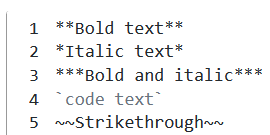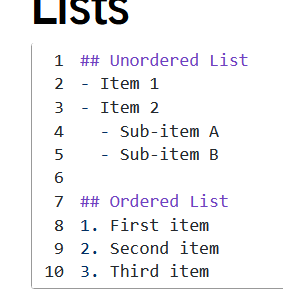Week 1 Notes - Course Introduction
Key Concepts Learned
- [List main concepts from lecture]
- [Technical skills covered] Main Class Tools
- Github
- Quarto
- Similar to RMarkdown
- Better site creation and language flexibility
- Integration of code, text, and output (so basically RMarkdown)
- Why?
- Reproductable research
- Professional Presentations
- Career Relevance
- “Industry standard”
- Creates sites, pdfs, presentations
- Formatting
- Text

text formatting how to
- Headers

header formatting how to
- Lists

list formatting how to
- Links & Images

header formatting how to
- Text
- Similar to RMarkdown
Coding Techniques
- [New R functions or approaches]
- [Quarto features learned]
Tidyverse Review
- Why Tibbles?
- Smarter printing
- Essential dplyr functions (you know these dummy)
select()– choose columnsfilter()– choose rows i.e.youngCars <- filter(carData, oldCars == "Not Old")&– syntax for AND|– syntax for ORmutate()– create new variables- Use
case_when()as if statement i.e.carData <- mutate(carData, oldCars = case_when(age > 20 ~ "old", TRUE ~ "Not Old"))
- Use
summarize()– create statisticsgroup_by()– operate on groups condenses rows by column values (works withsummarize()like pb & jelly)
- Piping
%>%– syntax for pipe- read as “then”
- connects lines of code to minimize outputs
Questions & Challenges
- [What I didn’t fully understand]
- [Areas needing more practice] Branch control with github desktop
Connections to Policy
- [How this week’s content applies to real policy work] Learning basics of professional version control
Reflection
- [What was most interesting]
- [How I’ll apply this knowledge] Application to doing R as a group